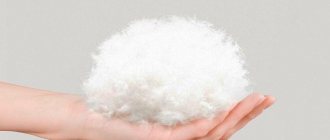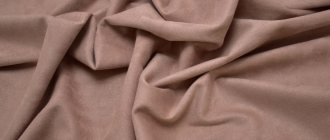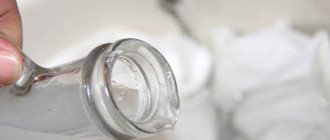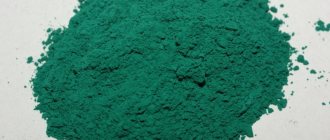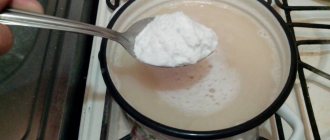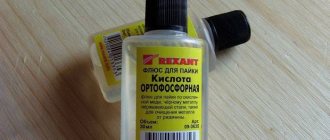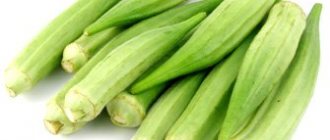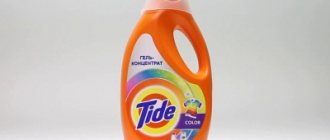Repair work includes the use of various paint and varnish liquids. They perform a decorative and insulating function and increase the service life of materials. One of these mixtures is drying oil. This is a special solution that forms a thin film on the surface of the product. It protects the material from the negative effects of aggressive environmental factors.
Purpose and application
Drying oil contains natural ingredients. If the solution smells, it means that synthetic substances have been added to it. They are represented by the following substances:
- flax oil;
- soybean oil;
- sunflower oil;
- desiccant.
Fats penetrate into the deep layers of the coating, and the drier accelerates the drying process of the material. When performing painting work, drying oil is used as an insulating material. To this day, it has not lost its popularity among professionals. A mixture of natural and chemical components performs a number of functions, thanks to which the solution is widely used in repair work. Using the solution you can solve the following problems.
- Impregnation of wooden surfaces.
- Giving the product a beautiful deep shade.
- Creating a base for oil paint.
- Providing protection against damage to walls by wood parasites, fungus, and mold.
- Moisture-repellent property.
- Preventing the development of corrosion on metal products and putrefactive changes in wood.
- Reducing the amount of paint and varnish materials during subsequent work.
- Improving the adhesion of putties and plasters.
Replacement of drying oil
When performing high-quality decorative work, it is difficult to replace drying oil with anything, but if we are talking about rough work, then for these purposes you can use the folk recipe for casein impregnation. By the way, the coating looks decent and dries quickly.
- Casein – 20 parts;
- Soap solution – 3 parts;
- Slaked lime – 10 parts;
- Turpentine – 7 parts.
During preparation, casein, soap solution and slaked lime are first mixed, then turpentine is added. At the finish we get a composition visually similar to drying oil. If the sediment “bounces off”, then you need to add a little ammonia.
Types of drying oil
Depending on the purpose and composition of the solution, drying oil is produced in several versions. The most popular mixtures are presented.
- Natural drying oil - based on flax seed oil and drier. This mixture is viscous and viscous, brown in color, with a slight odor, and does not release toxic components. It is used for treating wood and diluting paints before applying them to surfaces. Therefore, the solution is well suited for indoor work.
- Drying oil oxol - a suspension differs from a natural solution in the presence of a solvent in its composition, which gives it a sharp, unpleasant odor. However, it retains the properties of vegetable oil-based drying oil. The cost of this mixture is cheaper than other analogues. Over time, there is a need to re-treat surfaces, especially in the absence of a paint and varnish surface layer.
- Combined solution - which contains synthetic components of oil refining. This drying oil has a liquid structure and a sharp, unpleasant odor that can cause harm that does not disappear for a long time. It is distinguished by a lighter brown or reddish tint. The solution takes a long time to dry and is highly toxic, so it is not used for indoor work, because you can be poisoned by drying oil vapors.
Important! Before starting repairs, you should carefully study the instructions for use and composition. After opening the package, pay attention to the color of the solution.
Natural drying oil - features and properties
Natural drying oil is boiled vegetable oil, which has long been used for wood processing. Of course, various additives are added to the composition of modern drugs, but their essence does not change. After boiling, the oil thickens and becomes darker. If you leave it in the open air, it dries to form a polymer film.
If you follow the definition given in GOST 32389-2013, drying oil is a film-forming substance obtained by processing vegetable oil with the introduction of drier to accelerate drying. Natural drying oil, according to the same document, is a film-forming substance consisting of drying oil and driers.
For natural drying oil there is a separate 9262 - GOST 7931-76, which states that it can consist of the following components:
- natural linseed oil;
- natural hemp oil;
- cobalt, manganese and lead siccatives.
Important! Drying oil is a preparation for wood, which consists of heat-treated linseed or hemp oil with the addition of special substances to speed up drying.
The share of natural oil is at least 97%, the rest is driers. Physical characteristics of drying oil:
Physical characteristics of drying oil
What properties of the substance are used in construction? Basically this is the ability to impregnate wood and fill microcapillaries and pores. Then, under the influence of the environment, the drying oil polymerizes, and the wood pores become locked. As a result, water cannot penetrate the structure of the material.
Attention! Drying oil prevents moisture from penetrating into the wood. In the absence of water, the material does not infect mold and bacteria, and as a result it does not rot or undergo biological corrosion. This is a good natural anti-corrosion treatment.
After processing, the wood acquires a golden hue, which highlights its pattern and texture. After 24 hours, no greasy or oil stains remain on the surface. Processing gives the material nobility and sophistication.
Poisoning by drying oil vapors
When working with drying oil, vapor poisoning is possible. The likelihood of unpleasant symptoms occurring increases when purchasing a combination solution or oxol. Synthetic components have a toxic effect and can cause serious disorders in the body. The first signs of a pathological condition include the appearance of:
- headaches;
- dizziness;
- nausea;
- vomiting;
- disorientation;
- fainting;
- cough.
When exposed to the odor of the mixture for a long time, toxic components can accumulate, causing not only intoxication, but also more severe functional and organic changes.
If negative symptoms occur, you must leave the room and seek help from a doctor. You should get rid of your work clothes and take a shower. You can resort to taking oral sorbents and drinking plenty of fluids before being examined by a specialist.
How to choose the right drying oil
How to properly treat wood with stain and varnish.
When choosing drying oil, you should follow the simplest rules:
First of all, you should familiarize yourself with the composition of the impregnation, which is always available on the container, whether there is a GOST, it is indicated only on products with a semi-natural or completely natural composition. If it is a synthetic mixture, you should read the certificate. Any impregnating agent, natural or combined, must have a completely homogeneous structure
If foreign impurities or particles can be visually seen, it is not recommended to purchase this impregnation. You should also pay attention to how transparent it is. Natural compositions have only brown shades, synthetic ones can range from colorless to rusty tones.
Ways to prevent odor before starting work
If the repair process involves working with drying oil, it is better to find out in advance how to remove the smell. However, you can reduce the concentration and it will help it fade faster. To do this, you can use these tips.
- Before painting, leave the windows open and turn on the fan. The blades of the equipment must operate in such a way that the air flow is directed outward from the room.
- In rooms with high humidity, it is better to pre-dry the air using an air conditioner or heater.
- You can add a small amount of essence with mint, lemon or vanilla aroma to a jar of drying oil.
If you have to interrupt work for a short period of time, you must close the container tightly. And after completing the repair, it is better to get rid of the rollers and brushes that were used to apply the solution.
Removal of natural drying oil of vegetable origin
Natural or vegetable-based drying oil can be removed with a regular stain remover for greasy stains.
- To do this, you need to moisten a foam sponge or a piece of rag in a small amount of this substance and rub the stain.
- Then leave it alone for a while, about 10-15 minutes.
- Then wipe with a damp sponge or rinse in water if it is fabric.
Ways to neutralize odor after renovation
There are several ways you can find out how to get rid of the smell of drying oil after applying it. It's better to start with simpler options and then move on to more complex ones. It is important to follow these recommendations.
- Ventilating the premises is the easiest action to take if there is an unpleasant odor. In summer, you can leave the windows and doors open for three days. In winter, periodic access to fresh air through the windows is enough, so the smell disappears faster.
- If the surfaces inside the apartment have not been opened with varnish, then smoke treatment is performed. To do this, 48 hours after airing, take a roll of newspapers, preferably old ones, and set them on fire. The paper should smolder. They fumigate the rooms one by one, paying special attention to the places where drying oil was applied and a persistent smell remained. This method is very popular. You can also light several candles, including aromatic ones, in the rooms where you worked with drying oil.
Attention! It is necessary to close the room with smoke for 20 - 30 minutes, and then ventilate again.
Treatment with drying oil remains a popular method of coating products and surfaces. Following the application rules and recommendations after completion of the repair will prevent unpleasant moments, as well as quickly eliminate the consequences in the form of an unpleasant odor.
Natural drying oil for extreme circumstances
Many people know such a protective and decorative coating as a combination of linseed oil or linseed oil with wax. Natural, environmentally friendly, beautiful and noble. But not everyone knows that such a mixture also has strategic applications. This composition is used by travelers, fishermen and all those who need to work in damp conditions: construction or gardening work, picking forest fruits and mushrooms, working in the sea or on the river.
Historical documents repeatedly mention that since ancient times, clothes, shoes, bags, tents, etc., were waxed in inclement weather conditions, kept over a fire and received waterproof items, which helped to escape the cold. Also, tools or military weapons were rubbed and polished with wax so that they would not rust and would last longer.
The modern version of such a lubricant/impregnation is a more comfortable option, both in application and in operation. The base of the mixture consists either of linseed oil mixed with wax, or of drying oil, wax and turpentine mixed in equal proportions. The wax is grated on a coarse grater, melted, then drying oil is added, then turpentine can be added. If the composition is without turpentine, then you can even treat the skin - some people treat skin inflammation this way.
Enthusiasts also experiment with other additives, but drying oil and wax are present in all recipes. Natural linseed oil provides special softness and ease of use without compromising technical efficiency. The composition is easily applied to fabrics, then the product is treated with a hot hairdryer, which is much safer than holding it over a fire. It is very convenient that in modern conditions, fabric items treated with the mixture can be easily washed after a trip or work shift using a washing machine.
How to remove drying oil smell
Drying oil is used quite often to impregnate various wooden products and wood surfaces. This impregnation is used to protect wood from various external physical, natural and chemical influences and give it a rich color. Everyone is probably familiar that the smell of such a substance as drying oil is pungent and very specific and, in addition, lingers in the air for quite a long time.
After working with drying oil, the room must be ventilated for at least 3 days; if you did the work in the summer, then you can leave the windows open all day. But when it’s cold, try to ventilate the room more often and there is no need to create drafts, close the door to the room and open the window or window.
When natural drying oil is the best choice
Like any other natural product, drying oil is not a cheap impregnation option for wood. There are antiseptics, synthetic drying oils, stains and other, cheaper impregnations. How to understand when it is better to use a natural product?
This requires knowledge of the basics of working with wood, however, we can say that natural drying oil is used in the manufacture of furniture and various wooden structures such as doors, frames, floors and so on. In other words, its use is justified in the case of interior items, furniture, and interior decoration.
This is a good option when you need to treat surfaces that will come into contact with people. If it is important to maintain safety and refrain from using potentially dangerous and allergenic chemicals. In the case of treating surfaces that will come into contact with food.
You can't do without this product in painting, fine art and decoration. On its basis, oil paints are prepared and diluted, putties, putties, and pastes are mixed. The smell of drying oil is the smell of carpentry workshops, furniture workshops and art studios.
Important! Drying oil can also be used outside. These can be logs, siding boards, various garden furniture, parts of gates and fences. Finishing with paints and varnishes, as well as pre-impregnation with an impregnant, is recommended here.
How to get rid of drying oil smell
This will prevent the smell from spreading throughout the entire apartment.
After 2 days of airing, take a couple of newspapers, preferably old ones, then roll them up and set them on fire. As soon as the newspaper catches fire, put it out, the main thing is that it smolders and continues to smoke. Take the newspaper in your hand and walk with it (with the smoldering one) throughout the room, it is advisable to stop for a couple of minutes in the place where the drying oil was applied, then use water to extinguish the newspaper and immediately throw it into the trash bin standing near the porch.
Leave the room with smoke closed for 20 minutes, and then ventilate. However, this method is unacceptable in the room where work with varnishes was carried out.
You can collect water in small containers; for a room of about 20 square meters you need 2-3 containers, place them in different places throughout the room. Change the water daily. Regular salt will help remove the smell of drying oil; put it in small jars or plates and place them where there is an odor; the salt also needs to be changed every day. They also use coffee beans; place them on a piece of paper near the area treated with drying oil. There is no need to change the coffee beans here, just turn them over every day.
No major renovation is complete without the use of paints and varnishes. But how to get rid of the smell of paint in an apartment, which cruelly eats up all the post-renovation joy?
Your actions after repair
To get rid of paint smell immediately after renovation, you need to be patient and use effective methods!
At all times, airing has been the most effective method to get rid of any odor.
Nothing has changed these days. The longer the windows and balcony doors are open after renovation, the less your things, furniture and you will smell of paint. By the way, be sure to get rid of the source of the smell: used painting supplies (roller, brushes), tray and container where the paint and varnish material was stored.
After intensive ventilation, wipe all wooden parts of the interior with water and mustard: add 1-2 tablespoons of dry mustard to 10 liters of water. A vinegar or ammonia solution will help get rid of the annoying smell in the apartment: dissolve a tablespoon of vinegar or ammonia in 5 liters of warm water. Wash the painted surface with it.
To prevent the smell of paint after renovation from lingering in your apartment for a long time, literally smoke it out. Light a few candles and leave them burning for four hours. Along with oxygen, they will also burn the smell of paint - that’s the whole secret of smoking. And if you don’t skimp and buy scented candles, your home will be filled with real fragrance!
Just be extremely careful with fire so that you don’t have to wonder how to get rid of the burning smell in your apartment.
Wet several terry towels and old sheets, hang them around the apartment, and place wide containers of cold water on the floor. Moisture perfectly absorbs all odors and will help remove this one too.
Ground coffee, baking soda with a few drops of ammonia, charcoal, salt are excellent absorbents. Pour them into flat containers and place them around the perimeter of the room. They will help you get rid of the chemical smell in no time. And ground coffee beans will fill your home with the incomparable aroma of an invigorating drink!
Don’t be afraid to combine different methods: this way you’ll have a better chance of getting rid of paint smell faster and truly enjoying the results of your renovation.
Dyes are used everywhere in various areas of everyday life and production. Pigments are substances that give paints and enamels color; their chemical structure can be mineral and organic, natural or synthetic.
Paints are highly toxic due to the heavy metal compounds they contain, so-called metal poisons (arsenic, zinc, lead, copper), or organic compounds. Toxic components included in paints and varnishes most often adversely affect the skin, respiratory system and gastrointestinal tract.
After drying, all paints lose their toxic properties.
Application rules
In order for the use of drying oil to bring maximum benefit, it is recommended to follow the rules for its application. They are quite simple and require painting tools such as a brush, paint pan, and sandpaper. Next follow the instructions:
- The wooden part must be dried. Then it should be cleaned of dust and dirt, old finishes. Sand the surface with sandpaper P 120-180.
- Mix the drying oil and carefully apply it with a brush to the entire surface, ensuring a consumption of about 100 g/m2.
- Allow to dry outdoors in the shade, away from wind, for 24 hours.
- After the first layer has dried, you can reapply.
- The temperature during drying should be about +20 degrees.
Important! Do not try to speed up drying by using heaters, heat guns, hair dryers or fans. The best conditions for this are shade, coolness and calm. This way you will get maximum protection and a truly noble shade.
If additional protection is required, say for use outside or in wet conditions, then it is advisable to pre-treat the part with an antiseptic. A good choice is IMPREGNANT GOODHIM 230. After treating with an antiseptic, you should wait until the part has completely dried before applying drying oil.
In conclusion, let’s say that natural drying oil is a time-tested means for treating wood against moisture, rot and pests. It is completely safe and combines a number of unique features that make it indispensable in the protective and decorative processing of wooden products. This is the best product for furniture and interior details.
How does paint vapor poisoning occur?
The most dangerous paint components are solvents (toluene, dimethyl ketone, butanol, butyl acetate, etc.). Possessing high volatility, they have a local irritating effect on the skin, mucous membrane of the eyes, nasopharynx and oropharynx. Penetrating into the respiratory tract and then into the lungs, these substances can cause a number of acute respiratory diseases, a relapse of chronic pathology or an allergic reaction in persons with a predisposition. Toluene is able to penetrate not only through the respiratory organs, but also through intact skin, causing damage to the central nervous system of varying severity, including irreversible ones.
Once in the body in large quantities, solvents cause acute general intoxication.
The maximum permissible concentration, which characterizes the degree of harmfulness of the solvent, is individual for each chemical substance.
Most often, paint vapor poisoning occurs during painting work:
- painting large surfaces;
- working with paints in a room where there is no adequate ventilation;
- Carrying out painting work in a room with high temperatures, when increased evaporation of solvents occurs;
- work without personal protective equipment (respirator, gloves);
- use of low-quality material with excessively high content of heavy metals and solvents;
- independent dilution with solvents of paints that have lost their performance characteristics.
You can suffer not only from volatile compounds when working with fresh paints, but also when scraping off old paintwork or burning painted decorative elements.
Difficulties in choosing a drying agent for natural linseed oil
Drying agents should make up only 3% of the total composition of natural drying oil. This is so small, but it is very important in order to get a decent coating that dries quickly enough and lasts a long time. The quality and strength of the coating formed by linseed oil largely depends on how evenly it dries throughout the entire volume.
Many people are frightened by the fact that dangerous compounds can act as driers. In particular, those containing lead. It must be said that initially it was lead oxide that was designated as a catalyst for curing drying oil. It was chosen because its action extended both over the surface and throughout the entire depth of penetration of the coating. While, for example, cobalt stimulates surface hardening, zinc slows down surface hardening and accelerates it at depth, manganese gives a very dark tint, etc. It turned out that lead worked best.
However, now, with the advent of combined dryers, lead can be abandoned in many cases, and natural linseed oil is rightfully considered a 100% safe material.
In addition to the qualitative composition of the drier, its quantitative share is important. Because if there is too much catalyst, drying occurs quickly, which leads to unevenness. As a result, cracks and folds form, and the surface may again become sticky. Therefore, the hardening rate must be calculated extremely accurately - so that the surface has time to be sufficiently saturated with drying oil, and so that the polymerization process proceeds as evenly as possible.
The task was not easy, and few people can solve it at home. Because it is almost impossible to take into account all the subtleties in the calculations. To obtain a reliable result, you need a solid experimental base and qualified specialists. Therefore, despite the fact that the composition of natural flaxseed oil does not include many components, and the technology seems very simple at first glance, a composition produced by responsible production will always have an advantage over one made independently.
Symptoms of poisoning
Intoxication when interacting with paints can be both acute and chronic.
Signs of acute paint vapor poisoning are:
- cyanosis (blue discoloration of the skin);
- nausea, vomiting;
- confusion, deafness;
- severe general weakness;
- dizziness, intense headache;
- sneezing, dry hacking cough;
- watery eyes, nasal discharge (rhinorrhea);
- sore throat, nasopharynx;
- feeling of a foreign body and burning in the eyes;
- noise in ears.
General symptoms may be supplemented by signs of poisoning of a specific solvent used in the paint. Thus, in case of poisoning with dimethyl ketone (acetone) vapors, damage to the nervous system occurs, the clinical picture of which is similar to that of intoxication. Intoxication with butyl acetate vapor is characterized by intense burning of the nasopharynx, oral cavity, and eyes.
In case of chronic intoxication, which is more common among people who come into daily contact with paints and varnishes, symptoms of poisoning appear gradually over a long period of time:
- deterioration in general health, decreased mood;
- digestive disorders (nausea, heartburn, belching, bloating, stool disorders, lack of appetite);
- burning, itching in the eyes, conjunctival hyperemia;
- sleep disorders (insomnia, interrupted sleep, nightmares);
- persistent non-productive cough.
What is it made of?
Drying oil is made from vegetable oils with various additives (as a rule, these are driers - substances that accelerate the drying process of the oil). Additives are usually compounds of various metals. There are several types of drying oils:
- Natural – oil content of at least 97%;
- “Oxol” – 55% oil, the rest is solvent and driers;
- Combined - differs from the previous type only in the proportion of oil in the composition;
- Alkyd - instead of oils, alkyd resins are used;
- Synthetic - instead of natural components (oils or resins), their synthetic analogues are used.
The first 3 types of drying oil are often used for processing wood in wooden construction, as well as in the production of wood products. However, this is far from necessary, since there are other means for processing wood. By the way, if you are seriously thinking about building a wooden house, then rubcon.ru is for you.
What harm can drying oil cause?
To begin with, let's look at drying oils based on natural oil. The oil itself is not dangerous, but there are a few “buts”:
- Potentially hazardous metal compounds (lead, strontium) can be used as driers. However, their quantity is not large and does not reach dangerous concentrations. On the other hand, driers continue their effect on drying oil even after drying, gradually leading to the destruction of the outer layer, its oxidation and the release of various substances into the air. Due to the fact that such excessive destruction would lead to a lack of demand for drying oil, the proportion of strong drying agents in the composition of drying oil is small, and the concentration of substances released during the oxidation process is even less, since the process is sluggish and stretches for years. In other words, from this point of view, there is nothing special to be afraid of, except drying oil of dubious quality with an unclear composition.
- Essential substances. Any vegetable oil contains volatile components, which, theoretically, are not dangerous. However, these components have a pungent odor, the result of long-term exposure to which can be headaches. Allergic reactions are also possible, especially with systematic interaction with drying oil vapors.
- Oxidation. There is a version that oil in the process of oxidation is a carcinogen. However, to get such a negative effect, you need to work in the production of drying oil for several years and not use protective equipment. To obtain a carcinogenic effect, the dosage of oxidized oil must be huge. Let us remember that without any special consequences we often eat food fried in vegetable oil, and during the frying process it oxidizes very intensively.
As for synthetic drying oils, everything depends so much on the composition that without knowing it, it is very difficult to assess the likely harm.
So, the most likely negative factor from using drying oil that you will encounter even with one-time use is the smell. Fortunately, this problem can be eliminated by intensive ventilation, and as the treated surface dries, it disappears by itself.
First aid for paint vapor poisoning
At the first symptoms of acute paint vapor poisoning, you must:
- evacuate the victim from the place of exposure to toxins;
- ensure a flow of fresh air (open windows, doors, unbutton tight clothes);
- give plenty of alkaline drinks (milk, mineral water);
- If paint or solvent gets on your skin, rinse immediately with plenty of water.
In case of chronic poisoning, first aid measures are ineffective; qualified medical assistance is required.
Prevention
You can prevent paint poisoning if you follow a number of requirements:
- work in special clothing that covers all parts of the body;
- if paints and varnishes come into contact with the skin and mucous membranes, rinse immediately with plenty of running water;
- work only using personal protective equipment (goggles, respirator, gloves);
- ensure effective ventilation in the room where work is being carried out;
- When working with paint for a long time, take regular breaks, during which you can breathe fresh air.
Acrylic paints are the safest because they do not contain solvents and dry quickly. An alternative to acrylic dyes are water-based dyes, which do not have a strong odor and are not susceptible to moisture.
Video from YouTube on the topic of the article:
The information is generalized and is provided for informational purposes. At the first signs of illness, consult a doctor. Self-medication is dangerous to health!
Scientists from Oxford University conducted a series of studies in which they came to the conclusion that vegetarianism can be harmful to the human brain, as it leads to a decrease in its mass. Therefore, scientists recommend not completely excluding fish and meat from your diet.
The rarest disease is Kuru disease. Only members of the For tribe in New Guinea suffer from it. The patient dies of laughter. The disease is believed to be caused by eating human brains.
Four pieces of dark chocolate contain about two hundred calories. So if you don’t want to gain weight, it’s better not to eat more than two slices a day.
Even if a person's heart does not beat, he can still live for a long period of time, as the Norwegian fisherman Jan Revsdal demonstrated to us. His “engine” stopped for 4 hours after a fisherman got lost and fell asleep in the snow.
According to WHO research, talking on a mobile phone for half an hour every day increases the likelihood of developing a brain tumor by 40%.
You are more likely to break your neck if you fall off a donkey than if you fall off a horse. Just don't try to refute this statement.
The human stomach copes well with foreign objects without medical intervention. It is known that gastric juice can even dissolve coins.
It was previously believed that yawning enriches the body with oxygen. However, this opinion has been refuted. Scientists have proven that yawning cools the brain and improves its performance.
When lovers kiss, each of them loses 6.4 calories per minute, but at the same time they exchange almost 300 types of different bacteria.
More than $500 million a year is spent on allergy medications in the United States alone. Do you still believe that a way to finally defeat allergies will be found?
When we sneeze, our body stops working completely. Even the heart stops.
In the UK there is a law according to which a surgeon can refuse to perform an operation on a patient if he smokes or is overweight. A person must give up bad habits, and then, perhaps, he will not need surgical intervention.
According to statistics, on Mondays the risk of back injuries increases by 25%, and the risk of a heart attack by 33%. Be careful.
A person taking antidepressants will, in most cases, become depressed again. If a person has coped with depression on his own, he has every chance to forget about this condition forever.
The task of accurately establishing paternity is as ancient a problem as the search for the meaning of life. At all times, men were interested in whether they were raising their own children.
Cosmetic or major repairs are not only fraught with significant expenses - they can cause significant damage to health. The fact is that most paints and varnishes have a high degree of toxicity. If safety regulations are not followed, their fumes penetrate the body and cause intoxication.
The chemical composition of such materials contains salts of heavy metals - copper, lead, zinc and arsenic. In addition, to obtain a rich shade, synthetic dyes are introduced into solutions. But the greatest danger is posed by highly volatile solvents:
- acetone;
- toluene;
- butanol;
- solvent;
- dimethyl ketone;
- trichlorethylene;
- butyl acetate;
- carbon tetrachloride.
Through the mucous membranes they enter the blood and spread throughout all internal systems. The relatively safe dosage of a chemical varies depending on the degree of toxicity of the toxic substance and the individual characteristics of the body. Intoxication poses the greatest danger to young children, allergy sufferers, and people with chronic respiratory pathologies and weakened immune systems.
How to use drying oil to impregnate wood
Features of painting the facades of houses made of brick, wood and plaster
With the help of drying oil you can greatly reduce the consumption of paints and varnishes and because of this it is used in the form of a primer mixture.
It is very easy to apply and does not require special knowledge. Simply apply it to the surface using a brush, natural rag, spray bottle or roller and let it dry.
There are many design options, but the most relevant are:
- Hot impregnation method. This procedure should be carried out in a water bath and is primarily suitable for impregnating non-bulky parts. To do this, take wood, place it in a container with a heated solution and soak it in it for about 6 hours. After this, the part is removed and dried for 4 to 6 days until completely dry. If you initially add about 2% of the total volume of red lead into the solution, the material will dry in two days.
- A mixture of drying oil and kerosene. To do this, take drying oil for wood and kerosene in equal proportions, mix it and keep the wood in this solution. This method can be either cold or hot. The only difference is that with hot impregnation, a few hours are enough, and with cold impregnation it will take a day. The coating dries after the procedure for no more than 2-3 days.
- Drying oil and bag. In order to treat wood with drying oil using this method, you should fill the bag with drying oil about 1/10 of the way. After this, you need to put the wooden element into the bag, wrap it and glue it tightly. The average impregnation time is 3-4 hours. After a while, the bag needs to be opened and since the wood should be completely saturated, the bag should be refilled. This is done until the part stops absorbing.
How dangerous is paint poisoning?
Toxic fumes affect the digestive, circulatory and nervous systems. With prolonged contact with paints and varnishes, their effect may not be visible externally, but at the same time slowly poison the body. Acute paint poisoning is no less harmful - it leads to disorders of the digestive, circulatory and nervous systems. If a person carries out repairs alone, he may feel a sharp, sudden weakness or lose consciousness - and will not even be able to call for help.
After inhaling toxic fumes, the following phenomena occur in the body:
- functional disorders in the functioning of the cardiovascular system develop - arrhythmias, hypotension;
- the functioning of the respiratory system is disrupted due to a chemical burn, which provokes insufficient oxygen supply, dizziness, and headaches;
- visual function decreases due to irritation of the mucous membrane.
The paints used for wall decoration can cause the greatest harm to the body:
- aerosol - quickly penetrate the respiratory system due to the finely dispersed form of the particles;
- alkyd (especially oil) – contain harmful chemical additives that a regular respirator will not protect against;
- adhesive - are a mixture of synthetic oils and adhesive solution, which negatively affects human health.
All of them are highly toxic and require strict adherence to safety regulations. The following types of paints and varnishes are considered relatively harmless:
- silicate - do not pose a danger if direct contact is limited and proper ventilation of the room is ensured;
- emulsion - non-toxic, do not have an unpleasant odor, do not provoke allergic reactions;
- water-dispersed - do not contain solvents.
From a medical point of view, there are two types of poisoning:
- acute, occurs in the case of one-time intoxication, is characterized by pronounced symptoms, causes significant damage to health;
- chronic, observed in professional builders, characterized by general depression, weakness, and the development of depressive states.
If poisoning from paint fumes occurs systematically, the effects of toxins may take several months to appear. In case of acute intoxication, signs of paint poisoning are noticeable within a few hours. The way toxins enter the body may also vary:
- inhalation of paint fumes;
- inhalation of combustion products of old finishing;
- ingestion of paint;
- close physical contact (penetration through skin pores).
The first two options pose the greatest health hazard. They are also the most common among professional builders and DIY home repair enthusiasts.
Common symptoms of paint poisoning include:
- the appearance of unbearable headache;
- paleness of the skin;
- tingling sensation on the skin;
- increased tearfulness;
- sneezing, swelling of the nasopharynx, cough;
- irritation of mucous membranes;
- nausea, vomiting and diarrhea (in some cases);
- pain in the liver area;
- unpleasant taste on the tongue, bad breath;
- difficult and painful inhalation;
- disorientation;
- temperature rise to 39 degrees;
- dizziness, drowsiness, loss of consciousness.
In addition, specific symptoms are possible, differing depending on the toxic component:
- acetone vapor gives your breath a pronounced chemical aroma;
- butyl acetate provokes a burning sensation in the nasopharynx, eyes and mouth;
- trichlorethylene and acetone cause euphoria, similar to alcohol intoxication.
Chronic intoxication, which is observed in almost all professional workers, is characterized by the following symptoms:
- regular headaches;
- apathy, depression, fatigue;
- dry non-productive cough;
- digestive disorders;
- irritation and dryness of mucous membranes;
- sleep disorders;
- lack of appetite.
Types of existing drying oils
Today drying oil is usually divided into several types:
- To natural.
- Semi-natural.
- Combined.
- Synthetic.
To obtain natural drying oil, various mixtures of vegetable oils are used and practically no chemical additives are used. In order for the coating to dry faster, it is customary to add siccatin to the mixture.
As for the scope of application, it should be said that due to the natural composition it is practically impossible to protect wood from insects, and such drying oil costs much more. Therefore, the relevance of facade treatment is questioned.
This impregnation is much more relevant in the form of diluting oil-based paints and pre-priming wood.
This impregnation can also be used, for example, to cover a floor.
Oxols, or semi-natural mixtures, also have a base of vegetable oils, with one difference: the composition contains up to 40% white spirit.
Oxol is used in the same place as natural compositions, but more often than usual it is used in the form of a primer mixture and dilution of oil paints.
It is absolutely not suitable for use in a bathhouse, but it is quite acceptable to use it in residential premises for treating various wooden surfaces.
Among the advantages can be noted:
- Oxol dries a little faster than its natural analogues.
- It has significantly lower consumption.
- The cost is also lower than for natural impregnation.
Mixtures of combined composition have properties similar to semi-natural ones, but they contain much less solvents, by about a quarter.
The main advantage of these impregnations is that they are less toxic to humans.
This mixture is used as a primer and it dries in about a day, at average room temperature and humidity.
Impregnations of a synthetic nature have a purely artificial content.
They are usually made from waste from the production of rubber, coal and oil. Any synthetic impregnation smells unpleasant and has dark shades. This characteristic does not allow the use of drying oil as a primer and it is used mainly for diluting dark paints used to paint facades.
Synthetics have the lowest cost among other analogues, and accordingly they are of lower quality.
